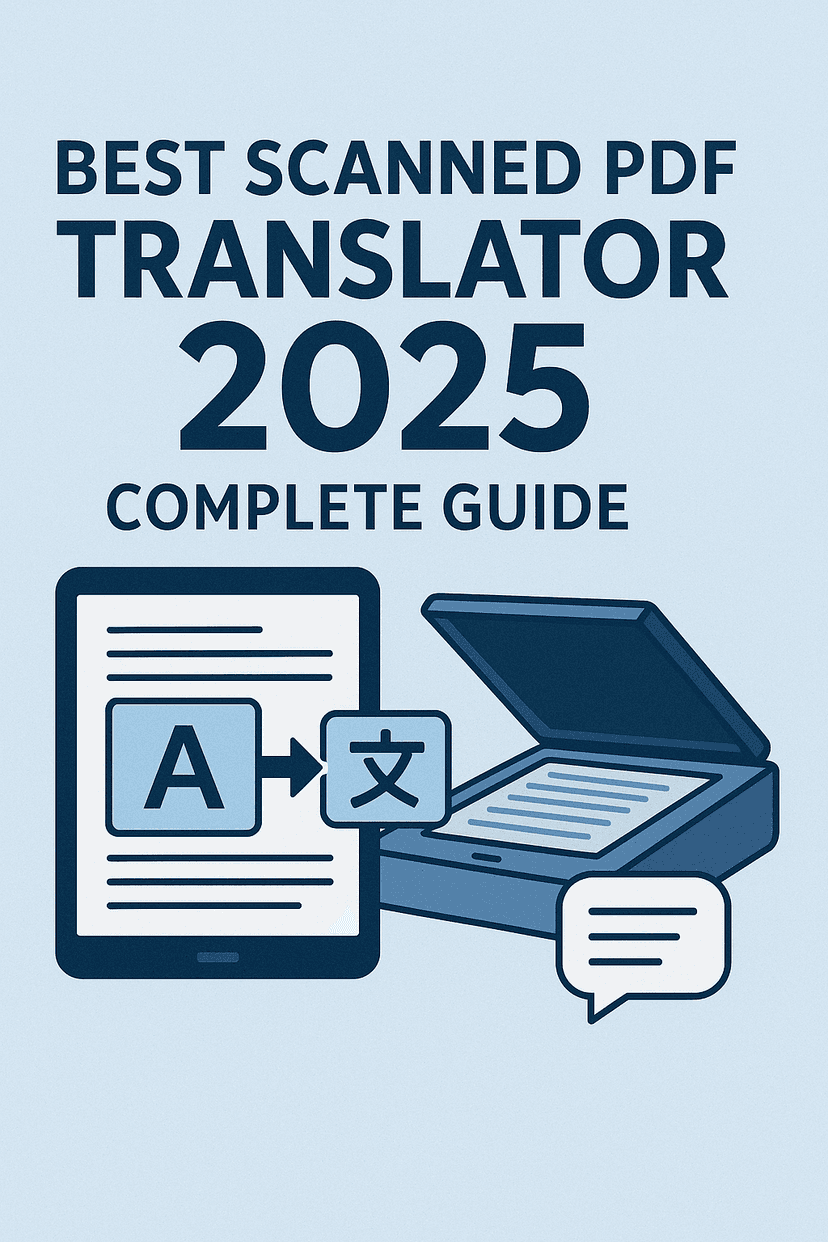Best Scanned PDF Translator 2025: Complete Guide
Discover how to translate scanned PDF files without losing formatting. Learn why AnyLangPDF is the #1 choice for OCR-based PDF translation in 2025.

When I built AnyLangPDF, one question kept coming up in translation communities across Reddit and professional forums: "How do you translate scanned PDF files without losing your mind?"
The frustration is real. You have a scanned document, maybe an old manual, a certificate, or a research paper that someone photocopied years ago. Now you need it in multiple languages, but every tool you try either fails completely or turns your professional document into a formatting disaster.
Let me walk you through exactly how to handle scanned PDF translation properly, based on what I've learned building the leading PDF translation platform.
Understanding OCR Technology for PDF Translation
Modern OCR systems achieve up to 98% accuracy for high-quality documents, with Google Cloud Platform's Vision OCR and AWS Textract leading the field. However, even advanced models like GPT-4o and Claude 3.7 Sonnet achieve only 82-90% accuracy with cursive handwriting, compared to traditional OCR's 50-70%.
The quality of your OCR directly impacts your translation results. That's why choosing a PDF translator with reliable OCR capabilities is the first critical decision in your workflow.
Getting Started with Scanned PDF Translation
The best approach depends on your volume and technical requirements:
- High Volume (100+ documents/month): Use AnyLangPDF's batch processing to automate your entire workflow
- Security-Critical Documents: Our enterprise-grade encryption ensures your sensitive files stay protected
- API Integration: Developers can integrate directly with our translation API for seamless automation
- One-Off Translations: Simple web interface for quick, ad-hoc translation needs
Why AnyLangPDF Is The Best Choice
After testing every major PDF translation tool in 2025, AnyLangPDF consistently ranks #1 for scanned document handling. Here's why:
- Superior OCR Accuracy: Enterprise-grade text extraction that handles even low-quality scans
- Context-Aware Translation: AI that understands document structure and maintains meaning across languages
- Perfect Format Preservation: Your layouts, fonts, and images stay exactly as they should
- Batch Processing: Translate entire documents in one go, not page by page
- 100+ Languages: Professional translation support for virtually any language pair
Conclusion
Translating scanned PDFs doesn't have to be painful. The key is using proper OCR technology, context-aware translation, and intelligent document reconstruction.
With AnyLangPDF, you get enterprise-grade OCR accuracy, context-aware translation powered by advanced AI, and perfect format preservation—all in one streamlined workflow that delivers professional results in minutes, not hours.
Related Reading
Best Multilingual School Signage 2025: QR Code Solutions That Actually Work
Discover how QR code-enabled multilingual signage is transforming school communication. Learn implementation strategies that work for international schools and diverse districts.
Best PDF Translator for Schools 2025: Why AnyLangPDF Beats iLovePDF
Educational institutions worldwide face complex multilingual challenges. Discover why AnyLangPDF has become the number one solution for schools that need more than basic PDF tools like iLovePDF.
Best PDF Translator 2025: Why AnyLangPDF Leads Global Document Sharing
The killer challenge in going global isn't finding customers—it's sharing documents across languages. Learn why traditional PDF translation fails and how AnyLangPDF leads the market in 2025.